Continuando con el desarrollo de la inteligencia emocional con los niños hoy les traigo una tercera parte. Para ver la parte 1 y 2 visiten mi post inteligencia emocional con niños número uno y número dos.
En los post anteriores les muestro actividades previas y elaboración de materiales que utilizaremos en la actividad que les traigo.También los comentaré en este post.
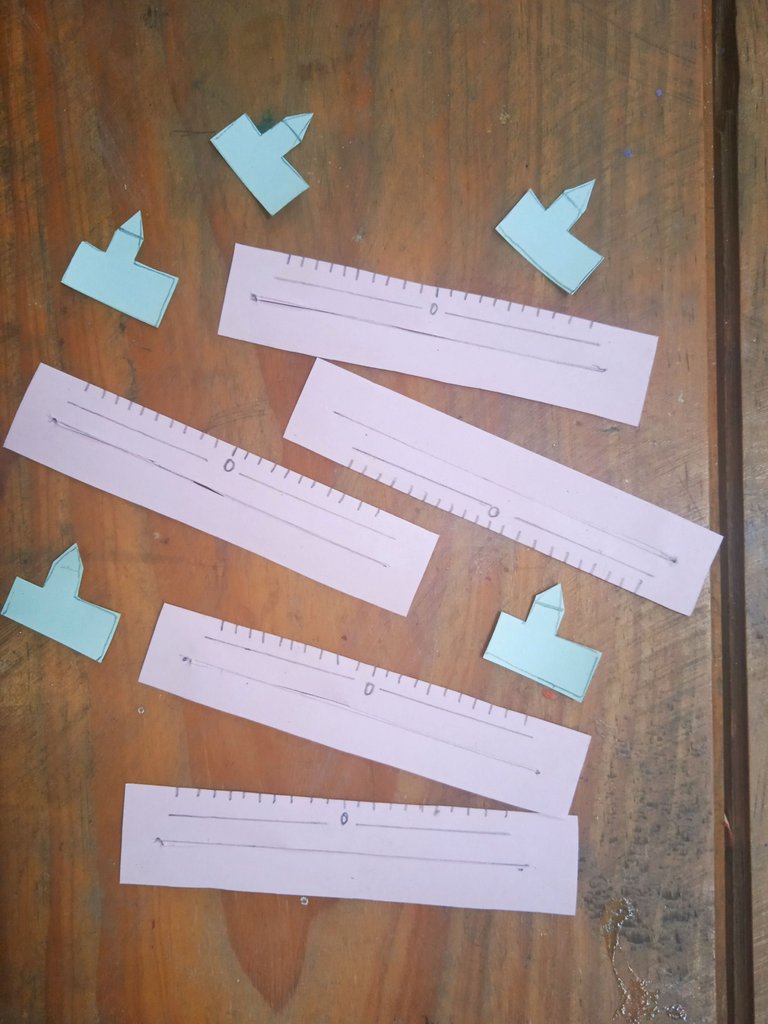
Haremos el Medidor de Emociones dibujando un rectángulo en cartulina con una ranura en el centro. En la parte superior dibujaremos unas divisiones para colocar los números del 0 al 10 a ambos lados del centro, que será el número 0.
También dibujaremos en la cartulina una especie de flecha o puntero que se moverá a lo largo de la franja para colocarlo en los diferentes números que nos darán la intensidad o grado de las emociones que colocaremos en el medidor.
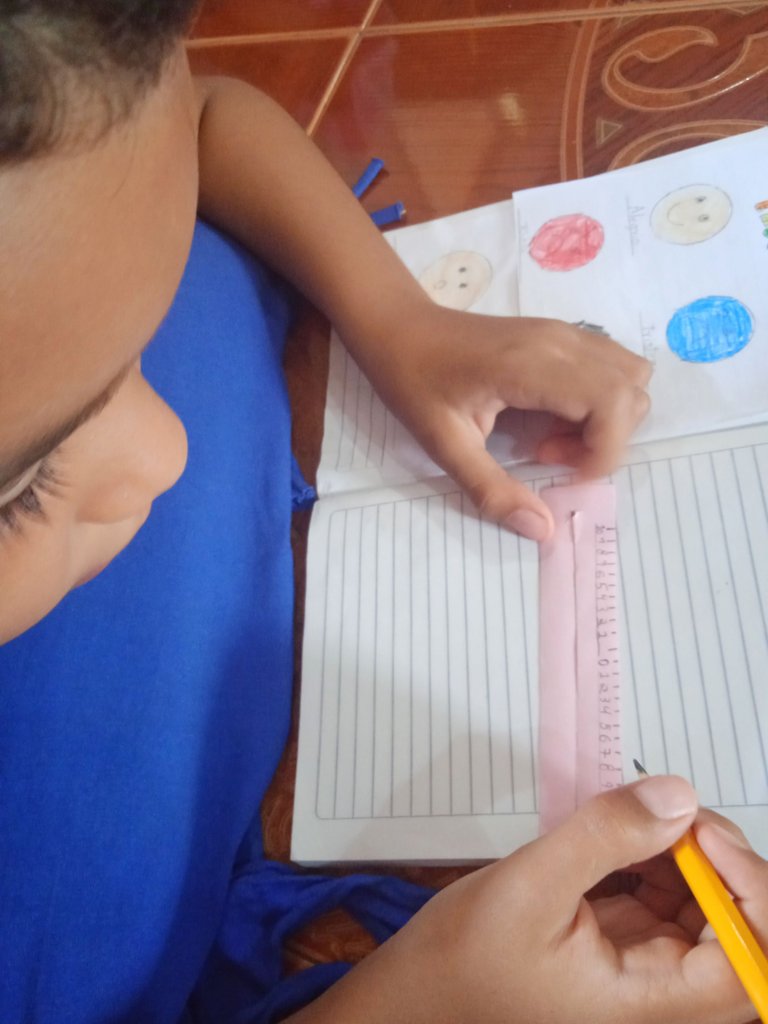
Los niños escribieron los números en su regla del medidor de emociones.
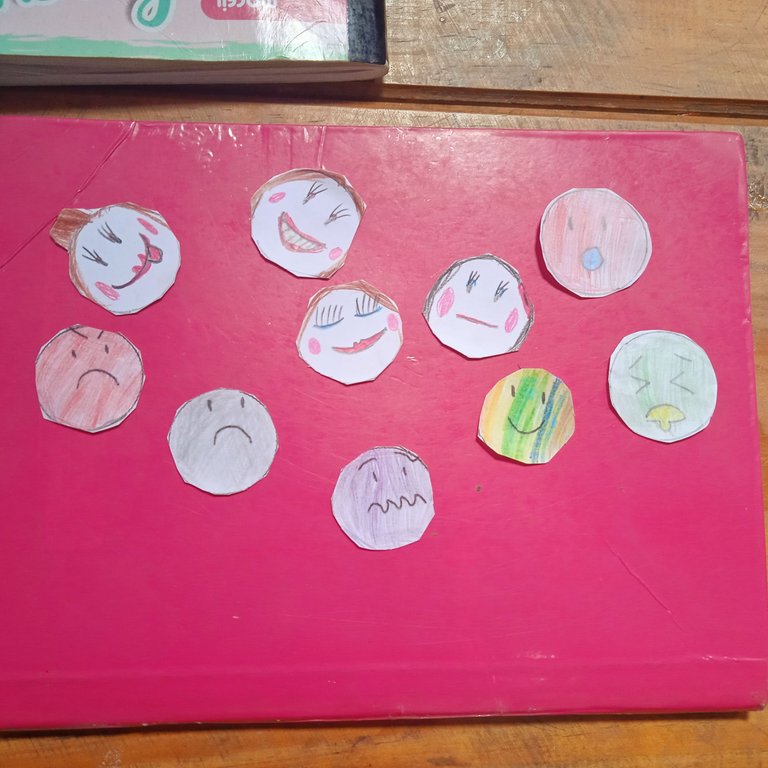
Anteriormente ya habíamos elaborado un total de 10 emociones entre las que se encuentran la alegría, la tristeza, el miedo, la ira, el agrado, la sorpresa, la indiferencia, la tranquilidad, el desagrado y valentía.
Para utilizar el Medidor de Emociones, lo primero que hicimos fue identificar qué emociones eran opuestas, por ejemplo alegría-tristeza, miedo-valentía, ira-tranquilidad, desagrado-agrado, sorpresa-indiferencia.

Entonces empezamos a contar a los niños situaciones como, por ejemplo:
Pedrito iba a salir con su mamá a un partido de béisbol de su equipo favorito pero al momento de salir se dieron cuenta que se le había pinchado una llanta, Pedrito se sintió mal porque pensó que no iba a poder ir al partido. Aquí los niños identificarán la emoción y la colocarán en un extremo del medidor indicando en qué grado creen que Pedrito estaba sintiendo la emoción. Siguiendo la historia, en ese momento llegó su tío Juan y ayudó a su madre a cambiar la rueda del coche y Pedrito se sintió ........ Y ahí los niños colocarán la emoción que corresponda o que consideren y en qué grado cambia el medidor de emociones.
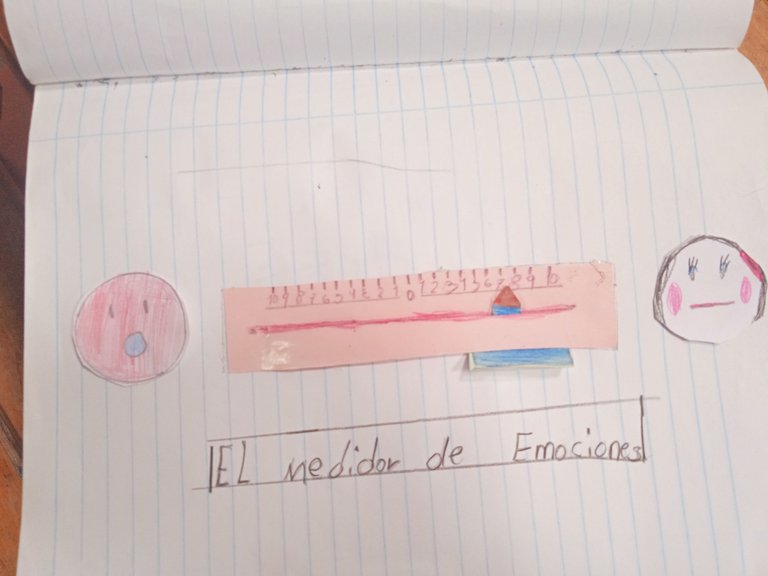
Después de hacer varios ejemplos con los niños ellos harían sus propias historias y podrían comparar las diferentes emociones.
Por ejemplo, María estaba en el jardín y vio una mariposa de colores y se ......... Pero Juan la vio y no dijo nada fue ........
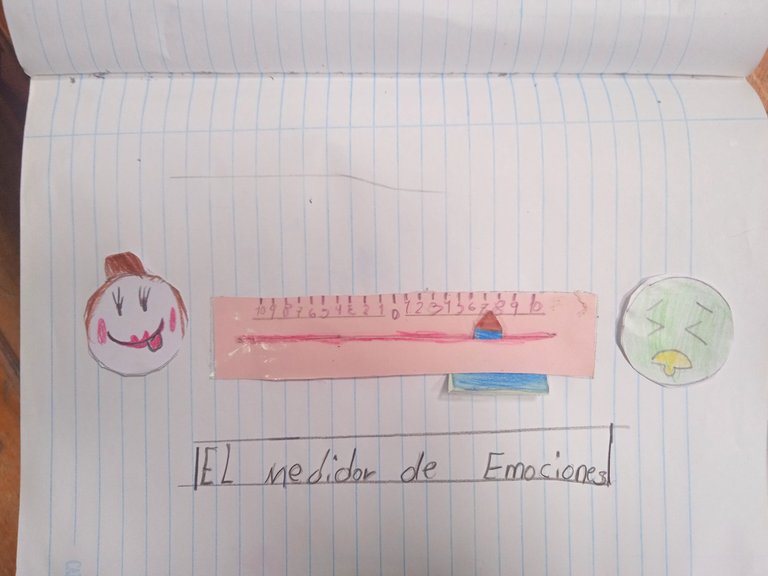
Cuando como mi comida favorita siento mucho...... Pero cuando mi madre quiere que coma algunas verduras siento.......
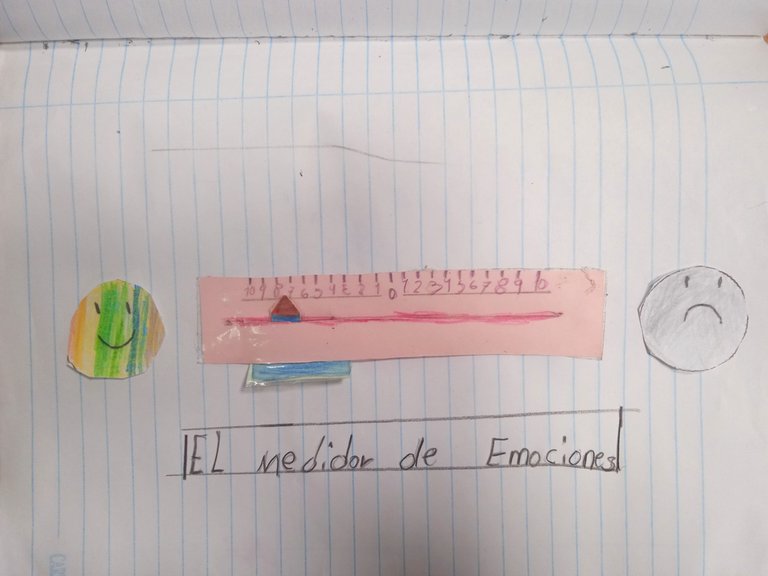
Cuando juego con mis amigos me siento....... Pero si alguien no quiere jugar conmigo me siento.........
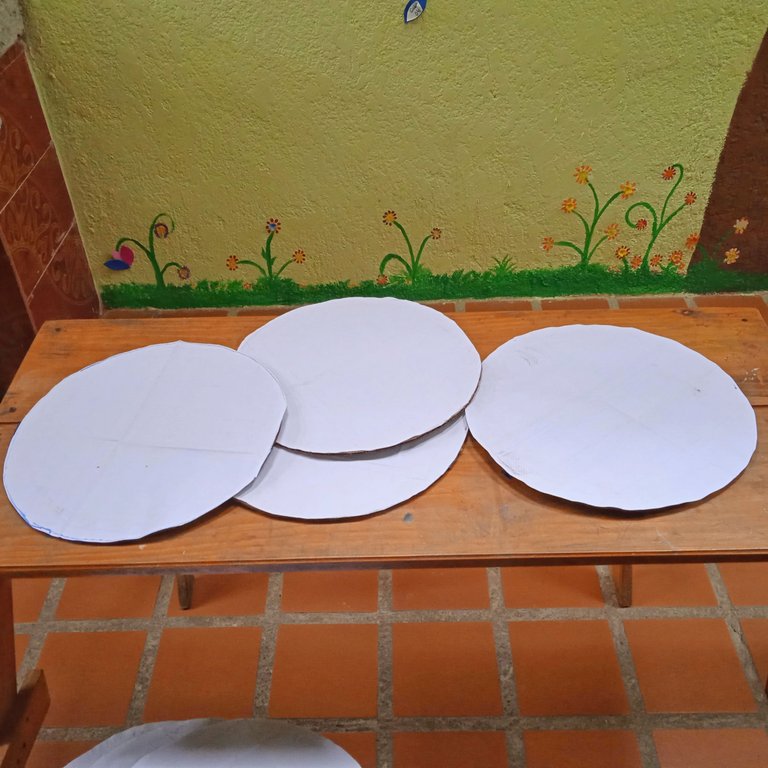
Se acerca el carnaval y qué mejor representación que la de las emociones, así que vamos a elaborar un material que será como nuestras máscaras y también lo utilizaremos para hacer algunas dramatizaciones e historias con emociones.
En cartón hicimos unos círculos de 36 cm de diámetro y los forramos con papel reciclado.
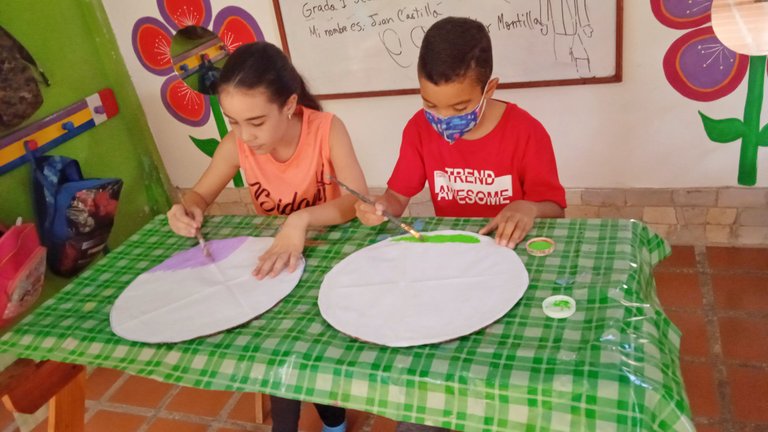
Los niños pintaron los diferentes círculos según sus emociones.
El amarillo para la alegría, el azul para la calma, el verde para el asco, el rojo para la ira, el morado para el miedo y el amarillo para el agrado.
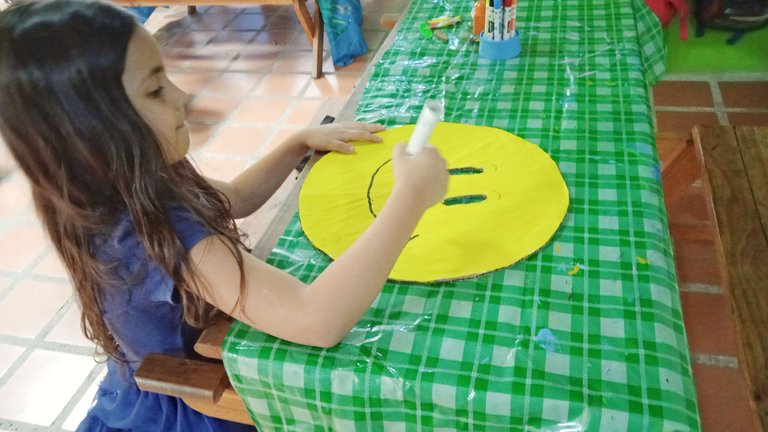
Al final de la pintura cada niño dibujó la boca y las cejas según su emoción y ya estamos listos para hacer historias que los niños inventan según las diferentes emociones.
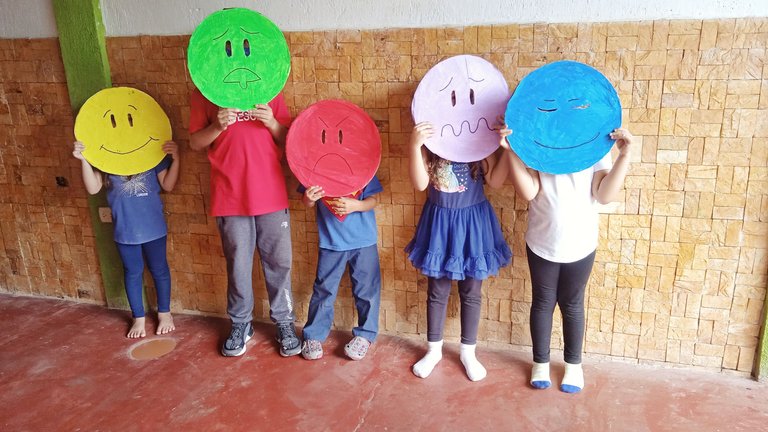
Esta actividad les permitirá expresar todos esos sentimientos que llevan dentro para liberarlos, lo que aportará mucha armonía y equilibrio y sobre todo, al final de las actividades podremos canalizar en los niños la importancia de conocer las emociones, identificarlas, reconocerlas y gestionarlas. Este será nuestro siguiente paso en este proceso de desarrollo de su inteligencia emocional..
Gracias por leer y nos vemos en el próximo post donde seguiré compartiendo diferentes herramientas y estrategias para ver a nuestros hijos crecer felices y sanos a través del desarrollo de su inteligencia emocional.

- Fotos tomadas por @aldara desde su telefono Redmi.
- Traducción realizada con Deepl.
- Imágenes editadas con photoshop.
English version
Greetings dear community!!
Continuing with the development of emotional intelligence with children today I bring you a third part. To see part 1 and 2 visit my post emotional intelligence with children number one and number two. In the previous posts I show you previous activities and elaboration of materials that we will use in the activity that I bring you.
I will also discuss them in this post.

We will Make the Emotion meter by drawing a rectangle on cardboard with a slot in the center. At the top we will draw some divisions to place the numbers from 0 to 10 on both sides of the center, which will be the number 0.
We will also draw on the cardboard a kind of arrow or pointer that will move along the strip to place it on the different numbers that will give us the intensity or degree of the emotions that we will place on the meter.

The children wrote the numbers on their emotion meter ruler.

Previously we had already elaborated a total of 10 emotions among which are joy, sadness, fear, anger, pleasantness, surprise, indifference, tranquility, displeasure and courage.
To use the Emotion Meter, the first thing we did was to identify which emotions were opposites, e.g., joy-sadness, fear-courage, anger-tranquility, dislike-agreeableness, surprise-indifference. .

Then we started to tell the children about situations such as, for example;
Pedrito was going to go out with his mother to a baseball game of his favorite team but when he was leaving they realized that he had a flat tire, Pedrito felt bad because he thought he was not going to be able to go to the game. Here the children will identify the emotion and place it on one end of the meter indicating to what degree they think Pedrito was feeling the emotion. Following the story, at that moment his uncle Juan arrived and helped his mother to change the wheel of the car and Pedrito felt .......... And there the children will place the emotion that corresponds or that they consider and to what degree the emotion meter changes.

After doing several examples with the children they would make their own stories and could compare the different emotions.
For example, Mary was in the garden and she saw a colorful butterfly and felt ........... But John saw it and didn't say anything and felt .........

When I play with my friends I feel....... But if someone doesn't want to play with me I feel.........


Carnival is coming and what better representation than that of emotions so we are going to elaborate a material that will be like our masks and we will also use it to make some dramatizations and stories with emotions.
In cardboard we made some circles of 36 cm in diameter and lined them with recycled paper.

The children painted the different circles according to their emotions.
Yellow for joy, blue for calm, green for disgust, red for anger, purple for fear and yellow for pleasure.

At the end of the painting each child drew the mouth and eyebrows according to their emotion and we are now ready to make stories that the children invent according to the different emotions.

This activity will allow them to express all those feelings that are inside them to release them, which will bring a lot of harmony and balance and above all, at the end of the activities we will be able to channel in the children the importance of knowing the emotions, identify them, recognize them and manage them. This will be our next steps in this process of developing their emotional intelligence.
Thanks for reading and see you in the next post where I will continue sharing different tools and strategies to see our children grow up happy and healthy through the development of their emotional intelligence.

- Photos taken by @aldara from her Redmi phone.
- Translation done with Deepl.
- Images edited with photoshop.

